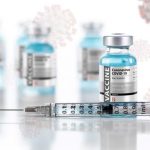
It can be challenging for people with type 1 diabetes to exercise safely while controlling their blood sugar. People with the condition often struggle with this balance, according to a new study based on a survey conducted through social media groups restricted to adults with type 1 diabetes who run, jog or walk for exercise. The survey findings were presented Thursday at a meeting of the Endocrine Society, in Chicago. “Managing high and low blood sugar levels before, during and after aerobic exercise remains one of the greatest challenges for people living with type 1 diabetes,” said lead researcher Dr. Joseph Henske, an endocrinologist at the University of Arkansas for Medical Sciences in Little Rock. “This study provides a number of key insights into the degree to which published guidelines and recommendations surrounding exercise with type 1 diabetes are understood and implemented in the real world,” he said in a meeting news release. In all, 102 adults with type 1 diabetes responded to the survey. Of those, 68% said they exercised four or more days per week, with weekly average of 23 miles. Nearly all (97%) said they used continuous glucose monitors. About 75% used insulin pumps. The respondents had a self-reported average HbA1C of 7.1%, indicating their diabetes was well-controlled. HbA1C is a measure of average blood sugar levels over the past three months.… read on > read on >


















